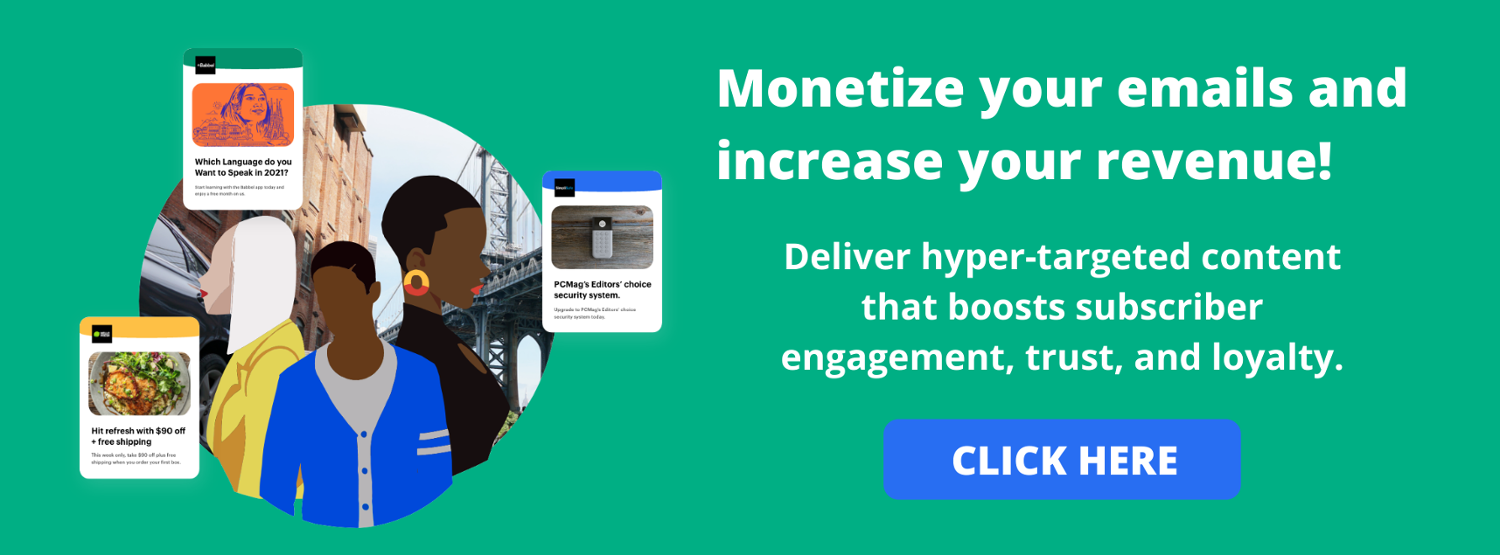Email deliverability is a constant concern of email marketing campaign managers and publishers. So much so, that we have received a ton of inquiries asking how we recommend improving email deliverability.
While it will always be challenging to achieve 100% success in delivering your marketing content, with some simple and inexpensive adjustments you can improve the delivery rates of the messages you send with minimal investment.
Below we’ll define common terminology, then detail three strategies that’ll help improve your deliverability while increasing trust among your message recipients.
Defining the Target
While the concept of email deliverability should be pretty easily understood – an email was either delivered to an address or not – there are some surrounding processes and practices that can impact deliverability that may not be common knowledge. Email communications may be subject to additional scrutiny due to the low barrier to entry, low cost to produce, and the low cost to send literally millions of messages.
Many countries have legislation similar to CAN-SPAM in the United States that puts strict limits on emails that can be sent to users. These are split into transactional and non-transactional messages. Transactional messages are messages that originate due to a user interaction with your product or organization, and are generally not considered spam.
Non-transactional email, by contrast, is likely where a lot of your email marketing will be focused. A non-transactional email is sent to a user outside the context of an interaction with your organization. This can be new user outreach (cold emails), user retention, product updates, or any of a number of message types whose purpose is to advertise a product to an end user.
These messages are often subject to hidden limits that determine how often you can deliver messages to recipients. The algorithms and filters that control this flow use algorithms that tie a number of attributes of your email marketing efforts together, including things like how many emails you send a time, the type and quality of content in your messages, and even whether or not your messages are broken.
These various factors, along with other tracked information like IP address and complaints received, are turned into a score that is used to classify your message with a spam filter. This drastically impacts your email deliverability, and as such, most non-transactional email will focus heavily on improving this “spam” score.
Reducing Batch Send Sizes and Times with Niches
One of the easiest elements to change in your system is the sheer number of messages you send at a given time. Many spam filters and blocklist providers look at your average email traffic over a period of time to determine an expected activity level for your marketing campaigns. By sending to large groups of people at the same time of day, you risk being flagged as a spam creator due to the sudden spike in traffic.
You can mitigate this by splitting your emails to send into batches, either based on pure mathematical divisions of your recipient base (such as “Send to 1,000 emails every minute”), or based on customer niches that can allow you to develop targeted content for your users.
Effective use of this niche strategy can enhance the power of adopting personas to drive deliverability by bolstering the emails with relevant content, a proven strategy for improving engagement and buy-in among your customer base.
Validating Auto-generated Content
As auto-generated content is leveraged more heavily on marketing platforms, there is a higher risk of offensive or sensitive terminology ending up in your messages that are sent to your users. For example, advertisements in emails can include things like online gambling, pornography, alternative marketplaces, and other businesses typically looked down upon by spam blacklist maintainers. Ensure that you validate any auto-generated content in your messages by maintaining regular measurements of an estimated spam score of your campaigns.
This is possible through a number of common tools. Jeeng, for example, exhaustively verifies their advertiser network to ensure the content is up to standard. We work with leading advertisers like Motley Fool, Rainmaker Ad Ventures, Target Corp., Refinery 29, DermStore, and more – all carefully monitored and curated to fit your target audience’s preferences.
This is particularly crucial as your customer base grows. As you communicate with millions of customers, you’ll need to avoid blacklisted advertisers. The last thing your users will want to see is a showcase on your email newsletters featuring irrelevant (or even obscene) content, and the potential hit to your target audience is huge.
That’s why working with trusted email monetization partners like Jeeng is crucial, as they let you rest easy by knowing that someone is on top of filtering your advertising content and ensuring the best possible customer experience.
Sending at the Correct Time
The time at which you send an email may not necessarily affect the deliverability of your messages, but it can severely impact open rates and reduce the number of customer actions you are able to track through your marketing campaign analysis tools. By adjusting the time of day at which you send messages, you can quickly improve view rates and get more immediate value out of the same content.
While the specific ideal times to send will vary with geography, generally the best times are at the start of the work day and surrounding the lunch hour during the work week. Check out this post from Sleeknote to learn about the best time to send an email based on multiple studies.
Improving Email Deliverability
Email deliverability is key in developing and executing a successful marketing campaign. By understanding how spam filters and blocklists work, and adhering to their guidelines and suggestions, you can avoid a lot of the downside of being labelled as a spam mailer and will see increased deliverability as a result. This can be further bolstered by validating the auto-generated content in your messages for potential spam indicators, and when sent at the correct time can lead to increases in open rates, which drive overall campaign success metrics.
With these simple tips, you will see a significant increase in email deliverability, and be able to better target your customers with relevant content.
Now that you’re aware of how important email deliverability is, make sure you don’t fall into any of the traps we mentioned above.
And if you’re ready to take your emails to the next level with monetization, contact us to speak with one of our email experts.




